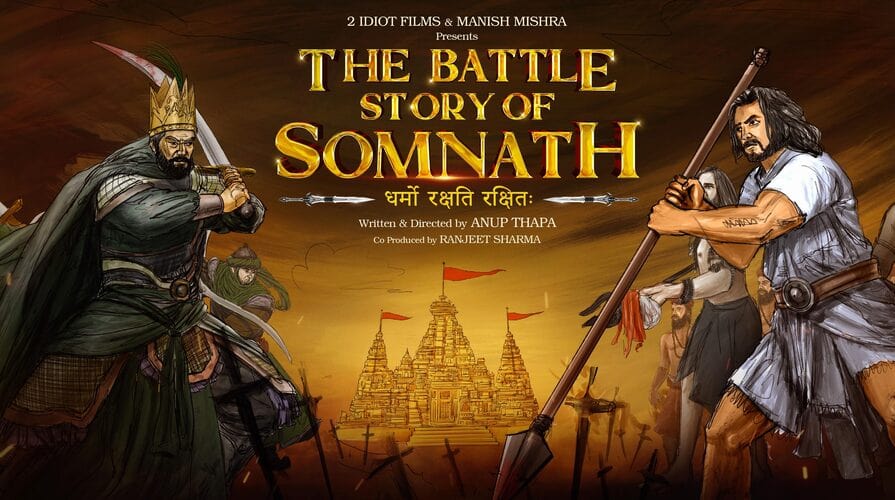Director Anup Thapa announces the film “The Battle Story of Somnath” based on a significant event in India’s history. This pan-India film will be made in Hindi and Telugu languages under the banner of 2Idiots Films, produced by Manish Mishra and Ranjit Sharma and directed by Anup Thapa, who has also written the story.
The teaser of the film gives a background of the Somnath Jyotirling’s history across the yugas as it says the saga of history, the first Jyotirling of Lord Shiv. Chandra Dev made it from gold in Satyug, made from brass by Ravan in Tretayug and Lord Krishna in Dwaparyug. The first biggest invader Mohammad Ghazni attacked in the 1025 CE.
Director Anup Thapa revealed that the film revolves around the context of Mohammad Ghazni’s attack on the Somnath Temple, but its treatment is unlike anything seen in historical films before. The announcement of the main cast will be made later, as the focus is currently on developing the film’s story. Anup Thapa stated that this story will present before the audience a version of Indian history that has either been forgotten or misrepresented by some historians. It is believed that every Indian should be aware of this historical event.
The Bhagwa Dhwaj waving freely atop Somanth temple with the winds coming from the Arabian sea were not like that till May 1951. The temple was plundered by Islamic ruler Mohammad Ghazni in the eleventh century. As many 50 thousand common people have fought and sacrificed their life to save the Jyotirlinga in Somnath. The restoration works of the temple were initiated only after India’s Deputy Prime Minister Vallabhbhai Patel visited Junagadh. On 12 November 1947, while the stabilization of the state by Indian Army was going on, Patel ordered the re-construction of the Somanth temple.
Shiv Yadav is creative producer & Doing casting too for this project. The film is set to release in 12 languages, with Hindi and Telugu being among them. The other languages are Gujarati, Tamil, Malayalam, Kannad, Nepali, Punjabi, Marathi, Bengali, Asami and Oriya.


